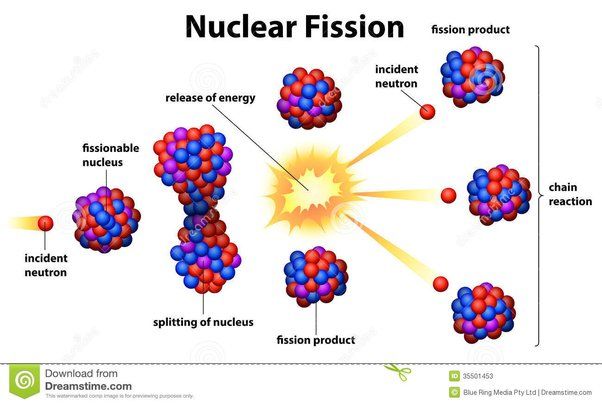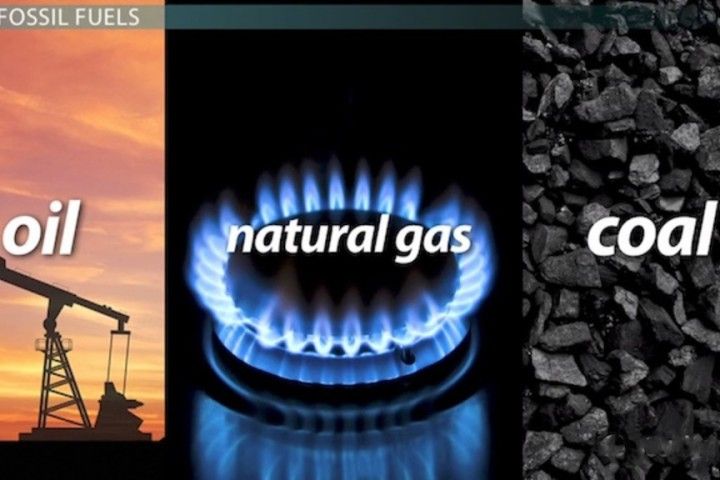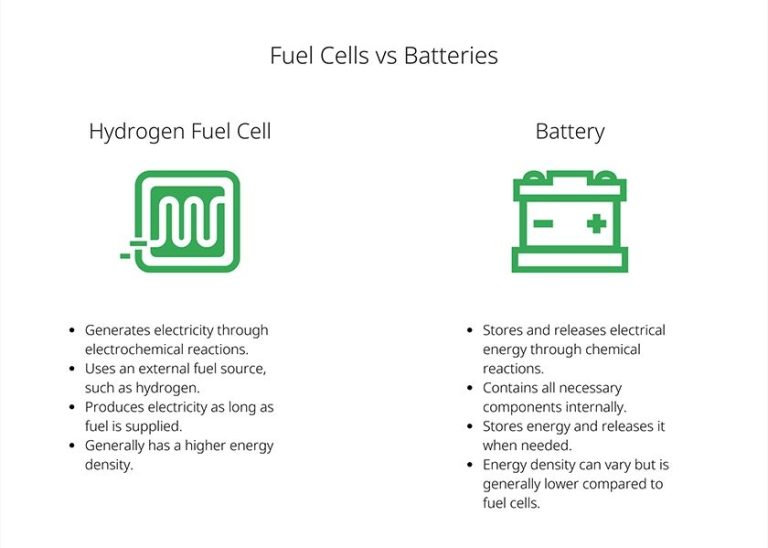How Is Energy Formed?
Energy is a fundamental concept in physics and an important aspect of everyday life. Understanding how energy is formed and how it converts from one form to another helps illuminate our world and harness energy to power society.
Energy in the most basic definition is the capacity to do work and make things happen. All energy comes from the movement or interaction of matter in some way, whether it be chemical interactions, nuclear reactions, sunlight striking the Earth or the motion of wind or water. Large amounts of energy are often formed through powerful processes like nuclear fusion within stars, but even small-scale events like metabolism and brain function within living organisms involve energy conversions.
The study of energy is crucial for fields like engineering, renewable energy, electronics and more. Learning how energy forms and flows allows us to better design technologies, predict events, protect ecosystems and sustain civilization in a responsible manner.
Potential & Kinetic Energy
Potential energy is stored energy and the energy of position. There are several types of potential energy including gravitational potential energy, elastic potential energy, chemical potential energy, and nuclear potential energy. Gravitational potential energy is energy stored in an object’s height above the ground. For example, a book held 2 meters above the ground has more gravitational potential energy than a book sitting on a table. Elastic potential energy is energy stored in elastic materials when they are stretched or compressed. For example, a compressed spring contains elastic potential energy.
Kinetic energy is the energy of motion. Moving objects and materials contain kinetic energy. The faster an object moves, the more kinetic energy it possesses. For example, a moving train has kinetic energy, and a faster moving train has more kinetic energy than a slower moving train. Other examples include a rolling ball, flowing water, and waves crashing on a beach which all contain kinetic energy.
Potential energy can be converted into kinetic energy. For example, when a ball held in the air is dropped, its potential energy is converted into kinetic energy as it accelerates due to gravity. Kinetic energy can also be converted back into potential energy, such as a ball rolling up a hill converting kinetic energy back into gravitational potential energy.
Chemical Energy
Chemical energy is the potential energy stored in the bonds between atoms that make up molecules. It is released when chemical bonds are broken in a chemical reaction. For example, the bonds that hold together the atoms in molecules like gasoline, propane, and even food contain chemical energy.
When gasoline combusts in an engine, the chemical bonds between the atoms in the gasoline molecules are broken. This releases the chemical energy that was stored in those bonds, which is transformed into heat and kinetic energy to power the engine. The same is true for other fuels like propane or natural gas.
Food also contains chemical energy stored in the bonds between atoms in molecules like fats, carbohydrates, and proteins. When food is digested, those molecules are broken down and the chemical bonds are converted into energy that living organisms can use.
Chemical energy is an extremely useful form of potential energy. The ability to store and control the release of so much energy in chemical bonds is what makes fossil fuels like gasoline and natural gas such versatile and valuable energy sources in our modern world.
Nuclear Energy
Nuclear energy is the energy stored within the nucleus of atoms. There are two main types of nuclear reactions that can produce energy: nuclear fission and nuclear fusion.
Nuclear fission is the splitting of a large atomic nucleus into smaller nuclei. This process releases enormous amounts of energy, as some of the mass of the original nucleus is converted into energy according to Einstein’s famous equation E=mc2. In nuclear power plants, fission reactions are used to heat water and produce steam that spins turbines to generate electricity.

Nuclear fusion is the fusing of two light atomic nuclei into a heavier nucleus. Fusion reactions also release tremendous amounts of energy due to the conversion of mass into energy. The sun produces energy through fusion reactions, fusing hydrogen atoms into helium. Fusion power holds great promise as an energy source but the technology is still in development.
Both fission and fusion reactions demonstrate the incredible power inherent in the atomic nucleus, converting tiny amounts of mass into enormous amounts of energy according to the principle of mass-energy equivalence represented in Einstein’s equation. Nuclear energy will likely continue to be an important energy source for human civilization for the foreseeable future.
Electromagnetic Energy
Electromagnetic energy is energy that comes from electromagnetic waves like X-rays, gamma rays, ultraviolet rays, visible light, infrared radiation, microwaves and radio waves. It is one of the most common forms of energy we use in everyday life.
Electromagnetic energy is unique because it exhibits both wave-like and particle-like properties. The particle aspect of electromagnetic energy is photons. Photons are massless packets of pure energy that travel at the speed of light. The energy of a photon depends on its frequency or wavelength – higher frequency photons have higher energy.
One major source of electromagnetic energy is the sun. The nuclear fusion reactions happening inside the sun produce photons in the form of visible light, ultraviolet radiation and infrared radiation. When these photons reach Earth, they provide the energy that powers many natural processes and supports most life on Earth. We can also capture solar energy using photovoltaic panels which convert sunlight directly into electricity.
Other uses of electromagnetic energy include radio waves for communication, microwaves for cooking food, X-rays for medical imaging, and gamma rays for sterilizing medical equipment. So in summary, electromagnetic energy is essential for transferring energy between atoms and across large distances through space, and modern society relies heavily on harnessing it in various ways.
Geothermal Energy
Geothermal energy comes from the heat within the Earth. The geothermal gradient, which is the difference in temperature between the core of the planet and its surface, drives a continuous conduction of thermal energy. The core of the Earth is over 4,000 miles below the surface and can reach temperatures of 9,000°F. This immense heat from the core is conducted through the mantle layer of rock to the crust, the outermost solid shell that ranges from 3 to 45 miles thick.
The high temperatures retained in the crust can be accessed as a renewable energy source in some locations. Geothermal energy is harnessed by drilling wells into areas with hot underground rock and using the heated fluid and steam to drive turbines that generate electricity. Geothermal power plants are typically built over tectonic plate boundaries, volcano belts, geysers, or hot springs where the crust is thinnest and the gradient steepest, providing accessible high-temperature fluid reservoirs. The geothermal energy accessible in the Earth’s crust is estimated to amount to 50,000 times the world’s annual energy use, though only a small fraction can currently be utilized. As drilling and conversion technology improves, geothermal energy promises to be a sustainable and renewable source of power.
Tidal Energy
Tidal energy is a form of hydropower that converts the energy of tides into electricity or other useful forms of power. Tides are produced by the gravitational pull of the moon and sun on the oceans. As the tides come into the shore, they can be captured and used to power turbines and generate electricity.
There are two main types of tidal energy: tidal stream generators and tidal barrages. Tidal stream generators are underwater turbines that are placed in areas with fast tidal currents. As the water flows past the turbine, the blades spin and power a generator to produce electricity. Tidal barrages are dams built across estuaries that capture water during high tides and release it during low tides to power turbines.
The gravitational forces of the moon and sun create bulges in the oceans nearest to and furthest from them. As the earth rotates, these bulges move around the oceans as tides. The difference in water height and timing between high and low tides provides the potential energy that can be captured for human use. Tidal energy is very predictable and relies on the regular gravitational forces caused by astronomical bodies like the moon.
Overall, tidal energy provides clean, renewable electricity and takes advantage of the natural ebb and flow of the tides driven by gravitational forces from space. With thoughtful design and placement, tidal energy systems can extract energy from the oceans with minimal environmental impact.
Wind Energy
Wind energy is produced by harnessing the natural kinetic energy of wind and converting it into mechanical or electrical power. Wind is created by uneven heating of the earth’s surface by the sun. As warm air rises, cooler air rushes in to fill the void, creating air currents. Wind turbines convert the kinetic energy of wind into rotational motion to spin a generator and produce electricity.
Modern wind turbines work by mounting large propeller-like blades onto a rotor, which spins as air currents pass over the blades. This rotational motion turns a shaft connected to a generator to produce electricity. The generator sends out electricity to transmission lines, which take it to a substation and distribute it to homes, businesses and the electrical grid. The amount of energy produced depends on the turbine’s size and the wind’s speed through the blades.
Wind power is considered a renewable energy source because wind will continually reoccur naturally. Wind turbines can be built on land or offshore in large wind farms that have the capacity to power thousands of homes. Some of the strongest winds are available offshore, over large bodies of water. Overall, wind energy is increasingly being used to provide clean, renewable electricity around the world.
Hydroelectric Energy
Hydroelectric energy is one of the oldest and most widely used forms of renewable energy. It generates electricity through hydropower, by utilizing the natural flow of water in rivers, streams, and waterfalls. Hydroelectricity works by directing flowing water through large turbines, which then spin to activate a generator and produce electricity.
One of the most common ways to generate hydropower is through the use of dams. A dam is constructed across a large river, creating a reservoir that controls and increases the amount of water flow. This reservoir builds potential energy as it collects and stores more water over time. The water is then released through an intake and piped downwards towards turbine generators. As the water flows downward with gravity, it rotates the turbine blades at high speeds. This kinetic energy from the moving water rotates a shaft inside the generator, which then converts the mechanical rotation into electrical energy through electromagnetism.
Hydroelectric dams provide a reliable and affordable source of renewable electricity in many parts of the world. Countries like China, Brazil, Canada and the United States utilize massive dam projects to generate gigawatts of cheap hydroelectric power. Advantages of dam-based hydroelectricity include its low operating costs after construction, ability to quickly adjust output to meet demand, and lack of greenhouse gas emissions during operation. Potential downsides include high initial infrastructure costs, geographical constraints, and environmental impacts on local ecosystems and habitats.
Overall, hydroelectricity harnesses the innate potential and kinetic energy of flowing waterways to produce carbon-free renewable electricity. With technological innovations and proper environmental planning, hydropower from dams can serve as a sustainable energy solution for the future.
Conclusion
In summary, there are many different types of energy that are formed in various ways. Kinetic and potential energy involve the motion and position of objects. Chemical energy is stored in the bonds between atoms and molecules. Nuclear energy comes from the splitting of atomic nuclei. Electromagnetic energy includes light, radio waves, and X-rays. Geothermal energy taps into the Earth’s internal heat, while tidal energy harnesses the ocean’s tidal forces. Wind energy utilizes the kinetic energy of moving air. Hydroelectric energy converts the kinetic energy of flowing water into electricity.
While fossil fuels like coal, oil, and natural gas have powered human civilization for centuries, renewable sources like solar, wind, hydroelectric, tidal, and geothermal energy are critical for a sustainable future. Transitioning to clean, renewable energy is imperative for mitigating climate change and its catastrophic consequences. The development of renewable energy technologies presents great opportunities to reduce greenhouse gas emissions and our reliance on finite fossil fuel resources. Implementing renewable energy on a global scale will require substantial investment and policy change, but has the potential to transform how humans power their lives sustainably.




